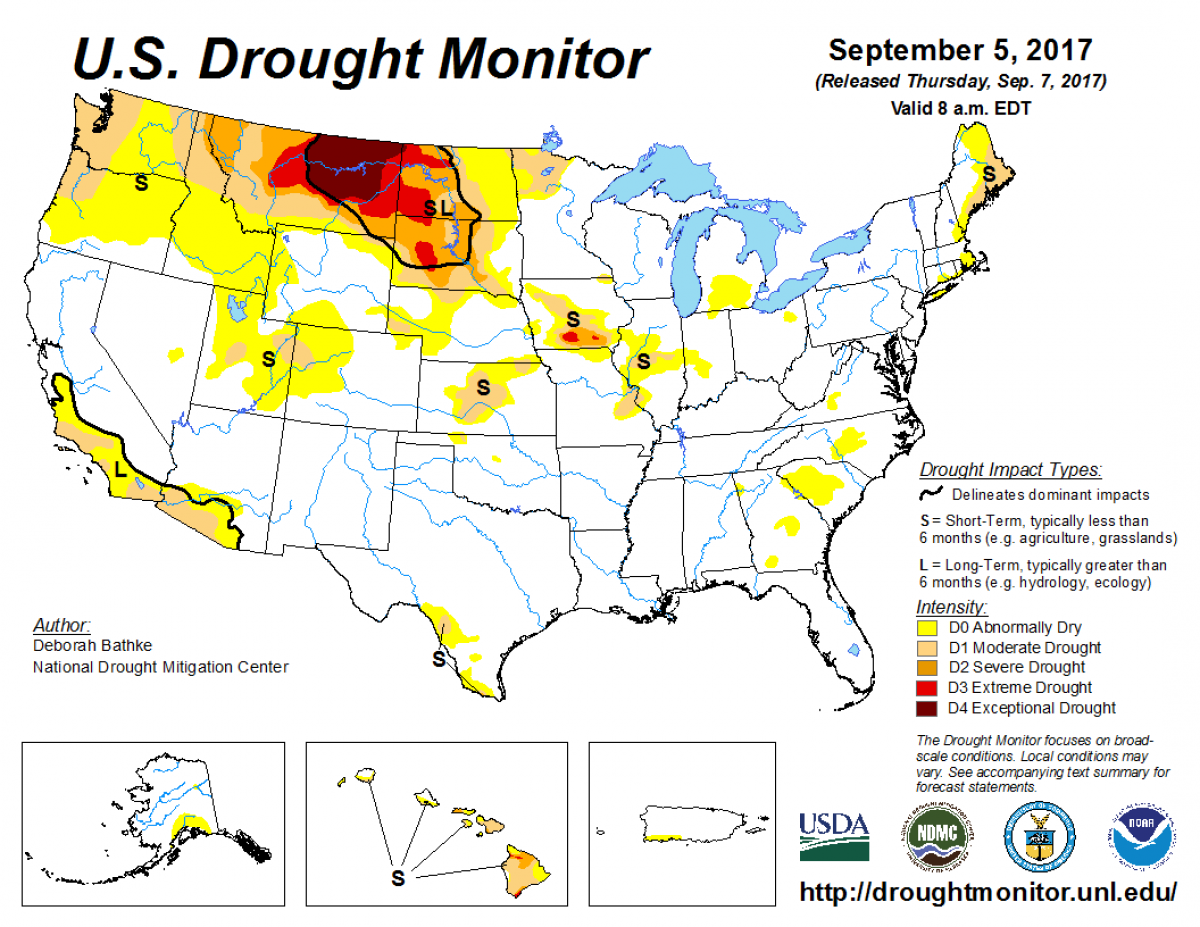
According to the September 5, 2017, U.S. Drought Monitor, moderate to exceptional drought covers 13.5% of the contiguous United States, an increase from last week’s 11.8%. The worst drought categories (extreme to exceptional drought) also increased slightly from 2.7% last week to 2.8%.
The upper-level circulation during this U.S. Drought Monitor week was a continuation of a strong ridge/trough pattern. The ridge over the western contiguous United States kept temperatures warmer than normal and deflected Pacific weather systems away from the region and well into western Canada. The trough over the eastern Lower 48 funneled cool Canadian air masses into the region, keeping temperatures below normal. The Canadian air masses were also dry and the strong northwesterly flow blocked Gulf of Mexico moisture from reaching the central contiguous United States.
The remnants of Hurricane Harvey brought heavy rain to the Lower Mississippi Valley and then the Ohio Valley to Northeast when it merged with a cold front. Meanwhile, moisture from the remains of Pacific Hurricane Lidia brushed the southwestern contiguous United States. Drought and abnormal dryness expanded in the Pacific Northwest, northern Rockies, Great Basin, and parts of the northern Plains due to the desiccating effects of the persistent heat and dryness, while lingering effects of earlier rains contracted drought and dryness across other parts of the central and northern Plains.
Abnormal dryness and drought are currently affecting over 64.1 million people across the United States—about 20.6% of the country’s population.

The full U.S. Drought Monitor weekly update is available from Drought.gov.
In addition to Drought.gov, you can find further information on the current drought as well as on this week’s Drought Monitor update at the National Drought Mitigation Center.
The most recent U.S. Drought Outlook is available from NOAA’s Climate Prediction Center and the U.S. Department of Agriculture provides information about the drought’s influence on crops and livestock.
For additional drought information, follow #DroughtMonitor on Facebook and Twitter.



